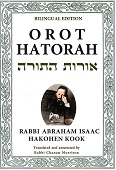
When Moses expressed his doubts as to whether the people would believe he was indeed God’s messenger, God gave him a sign to prove his authenticity — but a sign which implied displeasure in Moses’ lack of faith in his people.
What was the sign? Moses’ hand temporarily became white with tzara’at (leprosy). A miraculous sign, to be sure, but tzara’at is an affliction that defiles — a clear indication that Moses was being chastised.
The Sages noted a subtle discrepancy between the Torah’s description of Moses’ hand turning leprous and its subsequent return to normalcy. The first time, Moses took out his hand “and behold! his hand was leprous like snow” (Ex. 4:6). Then Moses placed his hand inside his robes a second time, and when he had “removed it from his chest, his skin had [already] returned to normal” (Ex. 4:7).
A careful reading of the text indicates that the two transformations occurred differently. The leprosy took hold after Moses removed his hand from his robe; but his hand reverted to its normal color even before he had taken out his hand, while it was still inside his robe. Why should there be a difference between the two?
From here, the Sages concluded,
“The Divine trait of tovah [goodness] comes more quickly than the trait of puranut [suffering or punishment]” (Shabbat 97a).
What does this mean? Why should one trait be faster or better than another?
Transcending the Limits of Time
There is in fact an essential difference between these two facets of Divine providence. The attribute of tovah is the very foundation of the world. Divine goodness is the goal of all existence; it is united with the very source of life. For this reason, this trait transcends the restrictions of time and place. Even when it descends into our finite world, a reality bound by time and place, we may still sense its elevated, limitless source.
This is the meaning of the Talmudic statement, “The trait of goodness comes more quickly.” The attribute of tovah reveals an inner light, free from the restrictions of time and place. Ezekiel described this phenomenon in his sublime vision of angelic creatures “running and returning, like rapid flashes of lightning” (Ezek. 1:14).
The trait of puranut is a different story. Puranut is not an intrinsic aspect of reality. It is ancillary and transitory. Its value is only to serve the good, to “refine the vessels” so that they will be able to receive the flow of Divine goodness in all of its abundance.
As a result, puranut is subject to the limitations of time and place, and its manifestation is delayed.
The True Nature of Israel
While Divine goodness is integrally connected to the inner essence of life, puranut relates to its superficial aspects. The more we distance ourselves from the true reality, the more our worldview becomes filtered through the lens of puranut. Seeing the world as a place of judgment and suffering is a perception emanating from distortions of the imagination. It does not focus on the true nature of reality, but on its external appearance.
Precisely here — as God taught Moses the true inner nature of Israel, beneath the cloak of outer appearances — the superficiality of puranut was unveiled. Moses’ arm only looked leprous after it was exposed to the outside light. In the realm of true essence, there is no place for suffering and harsh punishments; this trait belongs to the realm of superficial appearances.
Moses’ hand was restored to its original healthy state as soon as he placed it “inside his chest” indicating that the attribute of goodness reflects the inner essence of reality. It is connected to the root of creation, transcending all limitations of the finite universe. Therefore Divine beneficence is not restricted by the framework of time and “arrives quickly.”
(Sapphire from the Land of Israel. Adapted from Ein Eyah vol. IV, p. 243)





